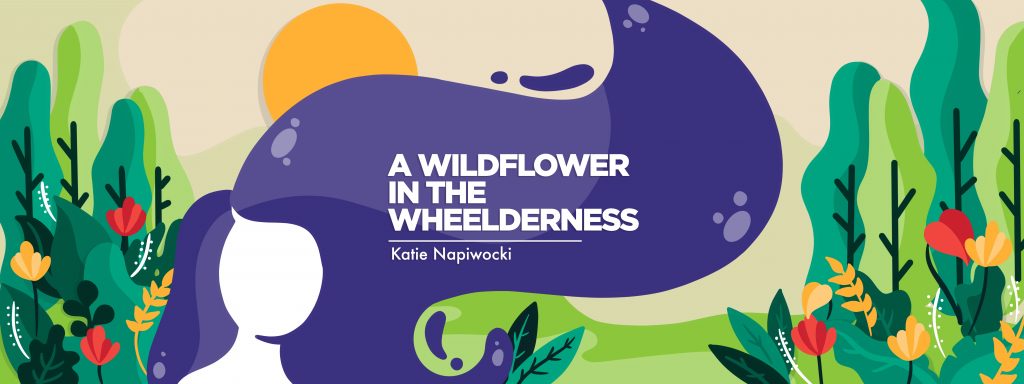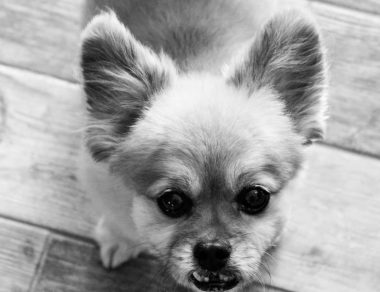Charades With a Little Wolf and Lessons From a Katydid


To no avail, I called out his name to grab his attention. He couldn’t hear me, and I pondered how to boost the synergy between us.
The little wolf nuzzled blades of lush green grass, swayed by the morning breeze. As he sniffed closer and closer to the tall grasses at the boundaries of the lawn, a katydid rustled in agitation at the intrusions of a cold, wet nose in its atmosphere.
It was one of the first katydids I’d heard this year. Each August, I look forward to their presence in my area of Wisconsin. They usher in summer’s wind-down phase, when the afternoons begin to glow more golden than usual and the tips of maple tree leaves are prophetically aglow with autumn smolder.
Katydids are fascinating insects, shaped like a bright green leaf that’s been granted personification by its fairy godmother at midnight. I initially grew fond of them for their whimsically artistic appearance. Whenever I see one, I wonder if it recently jumped directly out of the illustrated pages of a children’s storybook.
Since I’m often searching for the deeper meaning of characters in the world around me, I was elated to learn of the katydid’s symbolism and lore. The katydid is associated with increased awareness and sensitivity of our highest vibrations. Throughout a complex molting regimen, the katydid encourages us to overcome life’s barriers through personal transformation, reminding us to hold space for open-minded approaches toward evolving beyond everything that might make us feel “stuck” at times. The katydid is also a master of camouflage and adaptation.
I smiled to myself at the sound of the katydid in reverence of its wise offerings. Then, I turned my focus back to the little wolf, whose attention was still escaping me.
He sniffed around for the perfect spot, lifted a stout leg and claimed the fresh patch of earth as his territory. Ears astute, he kicked the dirt up with two back legs like he was in a hurry and late for a trip to the meat market. Only when he looked over to me from across the yard did I grasp his interest. I waved my right arm in a beckoning gesture and cocked my head in the direction of the house — a body language directive that was becoming all too familiar between the two of us lately.
My dog, Emery, resembles a minuscule version of a wolf. At age 15 and then some, he’s frozen in a perpetual state of adorable puppiness — save for his ears. Over the past year, his age-related hearing loss gradually increased and has reached its peak. He’s not a service dog, but his companionship has lifted my lowest spirits and helped me to cope nonetheless.
During my journey with Emery, I’ve relied heavily on my voice to communicate with him. I can’t crouch down to his level, or bend over for extended periods to provide substantial acts of care to him with my arms. Our relationship has required creativity within our methods of bonding, but the modifications happen organically.
My ability to nurture others derives from an intrinsic need to support their well-being, and is made possible by factors that extend far beyond my level of physical strength. Nurturing is an act born of the heart.
But physical nurturing is different than emotional and mental nurturing. During the physical tasks that play out during our daily life together, Emery has been acclimating to his hearing loss, and we’ve been learning how to communicate in a new way. He keeps his eyes on me more often during our household routines, searching for cues from my facial expressions to interact with me and understand what’s going on. He watches my hands to notice what and where I might be pointing to and intently tries to interpret the message I’m sending to him.
At this point, our communication style resembles rounds of charades and improv. We create as we go. While it will never be a refined process, adaptation calls for fluid innovation and flexibility. I won’t stop telling Emery what a good boy he is, or how much he is loved. I know he can still sense the energy of my words and spirit, even if he can’t make out what I’m saying.
One of the redeeming aspects of SMA is experiencing the ingenuity of how others adjust to life around me, and along with me. I’ve often thought of this occurring with people, but every soul who is a part of my life must continue adapting throughout our days together — including the furriest ones.
Regardless of ongoing shifts that accompany disabled life, a reliable constant is the endless opportunities encouraging us to learn from one another, so long as we remain curious enough to do so — me, Emery, and even the katydids.

Columnist Katie Napiwocki’s dog, Emery. (Courtesy of Katie Napiwocki)
***
Note: SMA News Today is strictly a news and information website about the disease. It does not provide medical advice, diagnosis, or treatment. This content is not intended to be a substitute for professional medical advice, diagnosis, or treatment. Always seek the advice of your physician or other qualified health provider with any questions you may have regarding a medical condition. Never disregard professional medical advice or delay in seeking it because of something you have read on this website. The opinions expressed in this column are not those of SMA News Today, or its parent company, BioNews, and are intended to spark discussion about issues pertaining to spinal muscular atrophy.
The post Charades With a Little Wolf and Lessons From a Katydid appeared first on SMA News Today.




